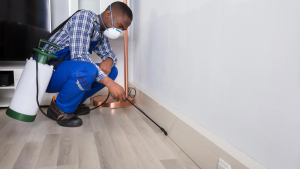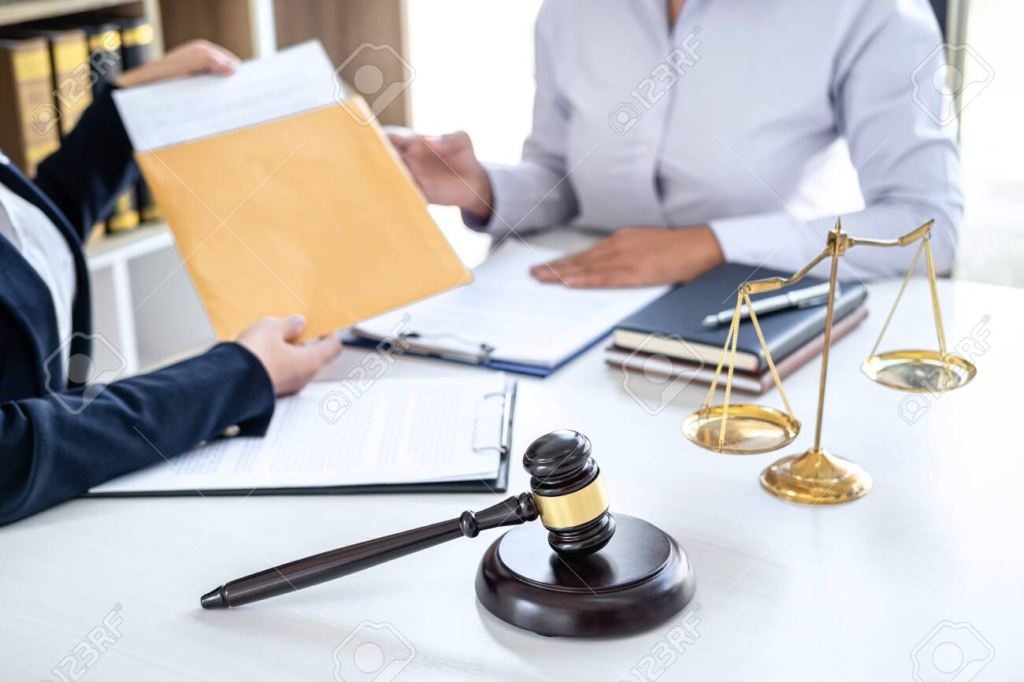An exterminator deals with pest infestations that damage property or pose health risks to people. They offer services to control pests, including rodents, termites, ants, mosquitoes, and bed bugs.
Exterminators conduct an initial inspection to identify the type and severity of pest problem. They also suggest long-term prevention methods. Click the https://permakillexterminating.com/ to learn more.

Pest identification is the first step in effective pest control. Identifying the species of pest invading a property allows an exterminator to develop strategies for eliminating or reducing the population without using toxic chemicals. Accurate pest identification is also essential for determining whether certain treatments or methods will be effective, as different pests respond to treatment techniques in unique ways.
Pests are typically classified according to their shape, size, color and other identifying features. A pest can be further categorized by its behavior, the environment in which it lives and how it reproduces. The knowledge gained from pest identification helps an exterminator create preventive measures that target the specific pest and its favored environmental conditions.
Some common household pests include ants, roaches, spiders, bed bugs, rodents and termites. Exterminators can help with these and other common infestations, providing advice on sanitation practices, structural repairs and landscaping modifications that will deter future pest invasions. Before beginning an extermination treatment, an exterminator will usually clean the targeted area and remove any clutter that could impede the effectiveness of the process. An exterminator can also recommend or provide other preventive maintenance services, including regular duct cleaning and garbage removal.
An exterminator’s work environment can vary greatly depending on the type of pest they are targeting. In urban environments, an exterminator might work in residential homes, commercial buildings or industrial facilities. In outdoor environments, an exterminator might focus on managing pest populations in parks, recreation areas, golf courses or residential yards. In agricultural settings, an exterminator might be responsible for preventing or controlling pests that threaten crops, orchards and vineyards.
In all environments, an exterminator might need to use a variety of tools and treatments to manage pest infestations. These can range from the application of chemical sprays and bait traps to heat treatments and fumigation. An exterminator will often keep detailed records of the pests they have dealt with, their treatment methods and any results observed. This documentation can be important for both long-term pest management and regulatory compliance.
Treatment
Everyone wants a comfortable home or productive workplace, and pests can quickly disrupt those goals. From cockroaches and bed bugs to rodents and termites, pests can cause serious health and safety problems in any building. When pests invade, it’s important to call in professionals for help. An exterminator is trained to assess an infestation and recommend the best course of action.
When an exterminator first arrives at a customer’s house or business, they typically begin by inspecting the property. This initial assessment may confirm or uncover what kind of pests are present, which can help them develop a targeted treatment plan. For example, if a customer finds pest droppings, the exterminator can use this information to determine if the droppings are from roaches or fleas. If the exterminator suspects fleas, they will likely recommend a different treatment approach than for a roach infestation.
Depending on their findings, exterminators may apply chemical pesticides, baits, traps or other methods to eradicate specific pests from residential, commercial or industrial spaces. They may also employ long-term prevention strategies, such as sealing entry points and removing food sources. Additionally, they often work outdoors in parks or other recreational areas to control outdoor pest populations, such as mosquitoes and ticks, that can spread deadly diseases like encephalitis, Lyme disease or Rocky Mountain spotted fever.
An important part of an exterminator’s job is to ensure that all treatment methods are safe for humans, pets and the environment. This is especially important when working with dangerous chemicals or pesticides. When possible, an exterminator will use natural or organic pest control methods that are less harmful to the ecosystem.
Another aspect of an exterminator’s role is to document their work and provide clients with detailed reports. These records can be helpful for future reference and to demonstrate regulatory compliance. Additionally, it is the responsibility of an exterminator to stay up-to-date on the latest pest control techniques and products. They may do this by reading industry publications or attending workshops and conferences. This continued learning helps them to improve their skills and better serve their clients.
Prevention
As the name suggests, exterminators are experts in addressing pests. They typically use chemicals and natural remedies to control infestations, trapping animals or insects when necessary. But they also help customers prevent future pest intrusions. For instance, they may advise on sealing up entry points to a home or office to prevent rodents from entering. They also provide tips on storing food properly to avoid attracting pests.
For some pests, like ants or bed bugs, prevention is key. These pests can spread germs and cause other health issues, so it’s important for people to address them right away when they see them. But for other pests, such as bees or wasps, a specialist might need to be called in. Regardless of the type of pest, an exterminator’s job is to find the root cause of the problem and implement solutions that will keep them from coming back.
While it’s easy to think that an exterminator is just a person with a spray bottle and a set of traps, they are actually licensed professionals with years of experience and a thorough understanding of the science of entomology and pest management. They are uniquely equipped to evaluate specific situations and determine the best course of action to rid properties of pesky pests.
Aside from analyzing the specific situation, an exterminator must also listen to their customer. They need to understand the habits and routines of their customer’s homes or offices, as this will help them pinpoint the source of the infestation. For example, if you are battling mice, an exterminator will need to understand how your family uses the living spaces in your home to determine where the rodents might be hiding.
Similarly, if you are struggling with bees, an exterminator will need to know how your garden and landscape is being used so that they can recommend measures to relocate the bees to a more appropriate environment. The same goes for ants, fleas, and other common pests. Ultimately, an exterminator can eliminate any pest invasion, but they need to have the right knowledge to diagnose the problem correctly in order to guarantee results that last.
Follow-Up
Following up is an act of gathering additional information or reinforcement to a previous action. While some dictionaries list followup and follow-up as one word without a hyphen, others consider a space between the two words standard when used in this context. Parents might call the school to follow up on their children’s grades after hiring a tutor.
Pest control companies also use the term to ensure that their services are working as intended. For instance, a follow-up visit within a week after spraying a home for cockroaches checks to see whether any baits have been eaten and identifies entry and exit points that might need to be sealed to prevent reinfestation. Similarly, email marketing software such as ActiveCampaign can automate follow-up emails based on customer actions and ensure that relevant messages are sent.


